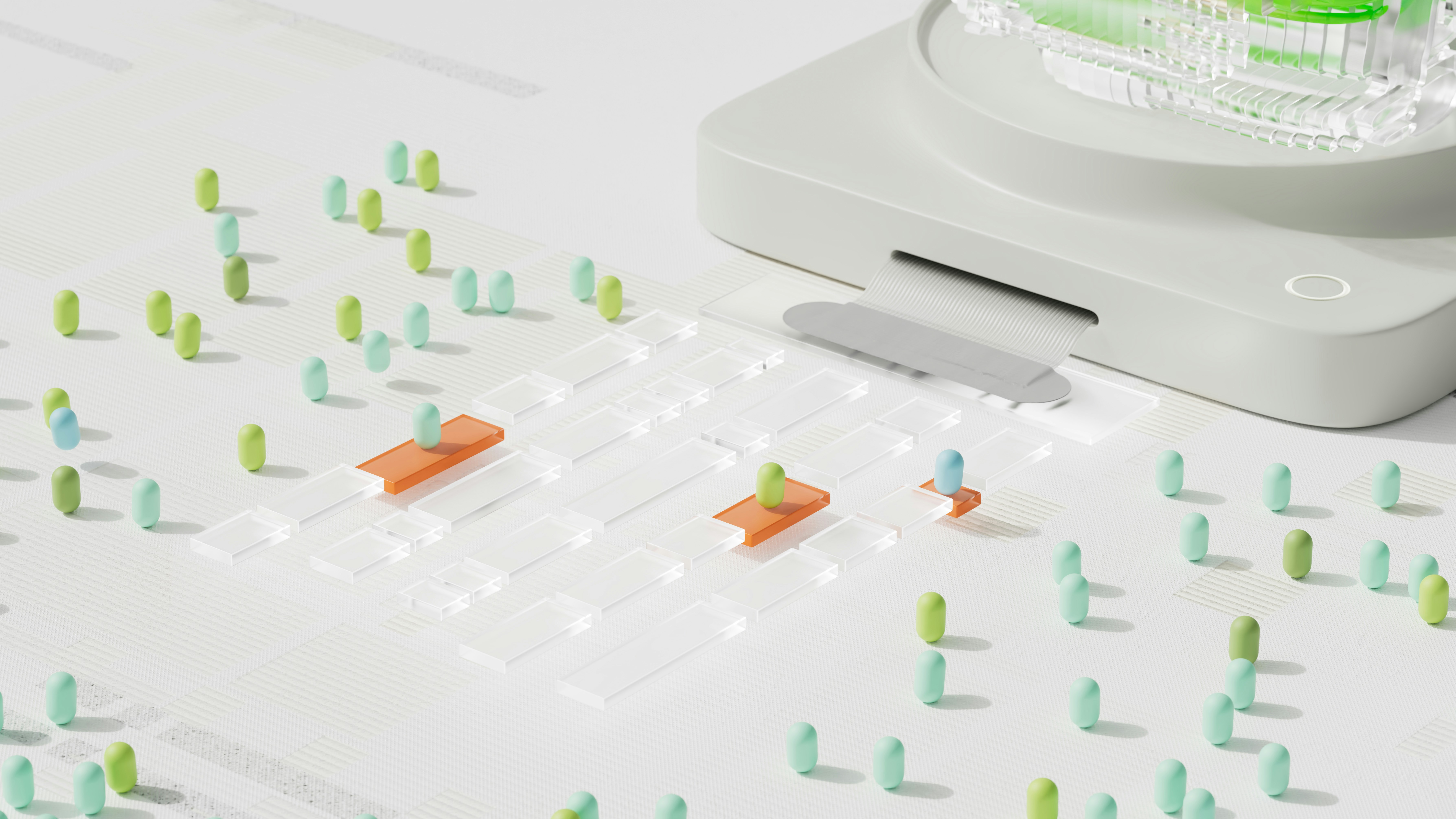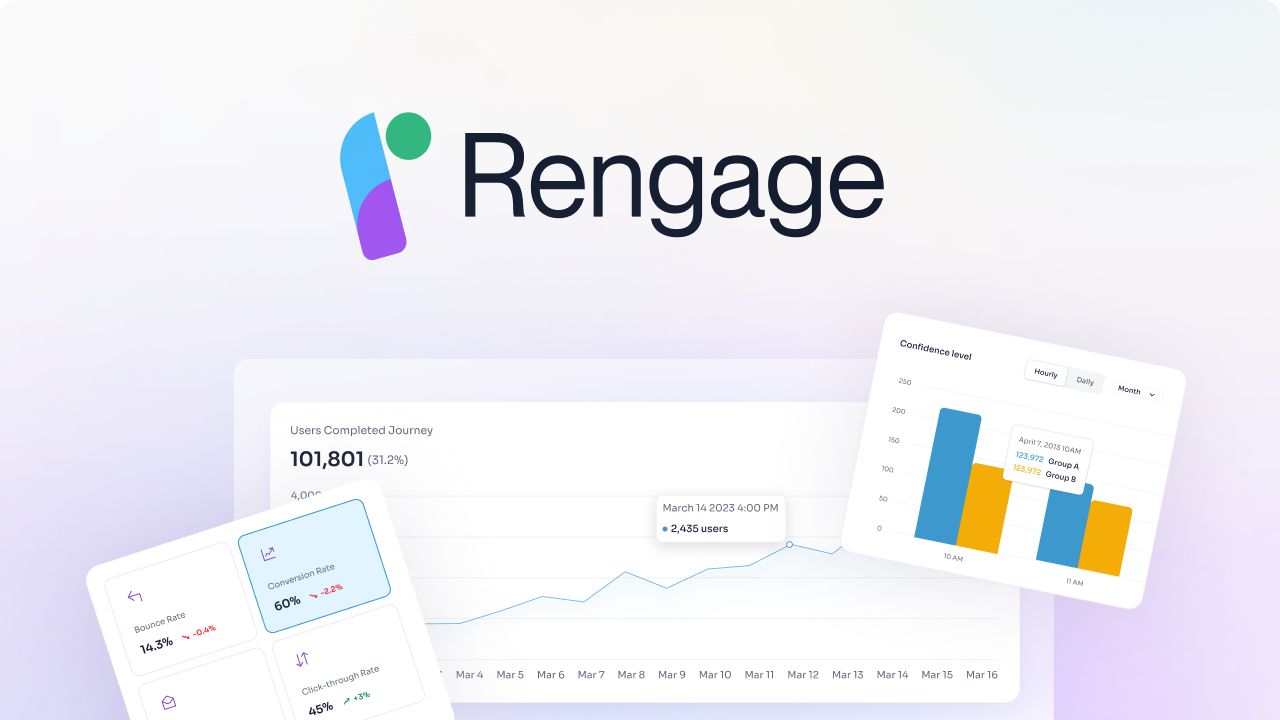Automating the customer journey is like having a personal shopper in your favorite store. Customer journey automation can streamline the customer lifecycle management process and provide a smooth buying experience. Whether it's sending personalized emails to customers who have abandoned their shopping carts or suggesting similar products based on previous purchases, customer journey automation can significantly increase sales and ensure customer retention. By learning about the various aspects of customer journey automation, you'll understand how it can play a significant role in enhancing your brand reputation.
What is Customer Journey Automation?

Customer Journey Automation is a system that automatically tracks all interactions and communications between a customer and the business and uses that data and mapping to enhance the structure to increase revenue. It starts tracking from the first contact all the way through the purchase of the product, as well as the journey post-purchase, and stores all that information. Using customer journey mapping, businesses can understand their customers better and add automation processes that will improve the overall customer experience.
Understanding the Customer Journey from Discovery to Retention
The journey of a customer starts when they first encounter a business or a brand through advertisements, email, social media platforms, or any other channel. The relationship continues to develop as the customer is exposed to more advertising, visits the website, and then goes on to purchase a product. Post-purchase, they may have to reach out to customer service to seek resolution of a problem, or maybe they are remarketed to and return for additional purchases.
Leveraging Insights from Customer Journeys for Business Growth
This journey usually predicts whether the customer will continue the relationship with the business or walk away after one purchase. A detailed customer journey can also provide insight into customer satisfaction and customer churn.
Related Reading
• Customer Lifecycle Management Best Practices • Customer Journey Analytics • Customer Journey Stages
8 Benefits of Customer Journey Automation

1. Nurture Leads
Automating the customer journey helps businesses in nurturing leads effectively. It simplifies the process and saves time that would have been spent manually tracking and engaging potential customers. With automation in place, business owners can focus on other critical aspects of their operations while knowing that leads are being nurtured. This allows for greater efficiency and productivity in managing leads and ultimately helps in converting potential customers into loyal clients.
2. Personalize Customer Service
Personalization in customer service is crucial for building strong relationships and inspiring customer loyalty. Automated marketing allows businesses to reach the right customers with the right content at the right time. By providing tailored messaging that is timely, relevant, and effective, businesses can create a personalized experience for their customers. This helps in nurturing customer relationships and ensures continued engagement with the brand.
3. Improve Relationships
Marketing automation plays a significant role in improving customer relationships by enabling businesses to reach a wider audience across multiple channels effortlessly. By maintaining consistent and respectful communication with customers, trust and brand awareness are built over time. Automation fills the communication gap between businesses and their customers, reminding them of the brand's presence and providing support when needed. This consistency helps in building a solid following for the business.
4. Connect Across Many Channels
Automated marketing offers businesses the opportunity to connect with customers through diverse channels like email, websites, and social media. By leveraging automation software, businesses can reach customers effectively across these channels without overwhelming them. This approach reduces pressure on customers while allowing businesses to nurture and support them seamlessly. Businesses can track and analyze the performance of various channels, enabling them to optimize their marketing strategies for better results.
5. Understand Your Customer
One of the key benefits of marketing automation is the ability to gain insights into customers' needs and behaviors. By understanding how customers interact with the brand, businesses can tailor their offerings to meet customers' expectations effectively. Automation helps in collecting valuable data that provides insights into customer preferences, allowing businesses to deliver a higher standard of service throughout the customer journey. Understanding customers' needs and thought processes helps in enhancing customer retention and satisfaction.
6. Value the Customer's Time
Automation in marketing saves valuable time for both businesses and customers by streamlining processes and providing quick responses to customer queries. By automating customer interactions, businesses can offer prompt and efficient service to customers, addressing their questions and concerns in real-time. This improved service quality helps in enhancing the customer experience, leading to higher customer satisfaction and loyalty.
7. Use Data for Better Decisions
Automation facilitates the collection and analysis of important data, enabling businesses to make informed decisions based on customer behavior and marketing performance. By leveraging data insights, businesses can optimize their marketing efforts, identify areas for improvement, and enhance their bottom line. Data-driven decision-making helps in understanding customer preferences and fine-tuning marketing strategies for better outcomes.
8. Streamline the Buyer's Journey
Marketing automation plays a crucial role in streamlining the buyer's journey by providing personalized experiences, faster feedback, and focused attention on customer needs. By enhancing the customer experience, businesses can create long-lasting relationships with customers, driving loyalty and repeat business. Automation helps in simplifying the buying process, making it seamless and enjoyable for customers, thereby fostering strong brand loyalty and increasing customer retention.
Unlocking Revenue Through Personalized Customer Interactions with Rengage
Book a free demo to learn about how you can transform customer interactions into personalized experiences that drive loyalty and growth with Rengage, empowering you to unlock revenue from your existing user base.
7-Step Customer Journey Mapping Process

1. Setting Clear Goals
Setting clear goals is crucial as it helps in focusing your efforts on the mapping process. SMART criteria, which stands for Specific, Measurable, Achievable, Relevant, and Time-bound, should be used to frame your objectives. This helps in keeping your goals precise and trackable, making it easier to measure success.
2. Collecting the Right Data
Data collection is crucial in creating a comprehensive customer journey map. It involves gathering all relevant customer interaction data to understand the customer experience fully. This includes both quantitative data from analytics tools and qualitative data from customer feedback. It is essential to identify all sources of customer data within your organization, such as web analytics, CRM systems, customer feedback forms, social media interactions, and sales data.
3. Creating Detailed Customer Personas
Creating detailed customer personas is essential to tailor the customer journey map to meet the unique requirements of different customer segments. These personas are detailed representations of the different segments of your customer base. They help in understanding various customer needs, behaviors, and decision-making processes. Customer personas should include demographics, psychographics, behavioral traits, needs and pain points, and motivations and goals. Analyzing customer data is vital in developing personas that reflect common characteristics and behaviors within different customer segments.
4. Identifying All Touchpoints
Identifying all touchpoints is crucial as these are the points of interaction between the customer and your brand. These touchpoints range from initial awareness through post-purchase. It is essential to list every possible interaction point, including digital interactions like website visits and social media engagement, as well as physical interactions like store visits or product usage.
5. Visualizing the Journey
Visualizing the journey involves mapping out each touchpoint along the customer journey. This creates a visual representation of the paths customers take. By organizing the touchpoints chronologically for each persona, you can plot them on a timeline and include potential branches where customers might take different paths based on their decisions.
6. Analyzing and Identifying Gaps
Analyzing and identifying gaps involves examining the journey map to identify where customers might face problems or less-than-optimal interactions. By looking for high drop-off rates, negative feedback points, or stages where the customer seems to stall or disengage, you can identify both obvious and subtle gaps in the journey.
7. Implementing Improvements
Implementing improvements is the final step that involves using the insights gained from the journey map to make targeted improvements that enhance the customer experience. It is crucial to prioritize improvements based on their potential impact and feasibility. Changes should be implemented incrementally to test their effectiveness and adjustments made as needed.
How Does Customer Journey Automation Work?

Once a customer journey map has been created, it can be integrated with automation tools to automate marketing processes and identify content gaps, key challenges, and tedious manual processes. This helps speed up processes, complete repetitive tasks quickly, and ensure messages and alerts are set to help ease the customer journey. The result is better-informed customers, less friction in the purchasing process, and increased efficiency, boosting engagement and the overall customer experience.
3 Use Cases for Customer Journey Automation

1. Enhanced Customer Experience
Customer Journey Automation can resolve issues instantly for customers. For instance, using live chat assistance or AI tools like chatbots to respond to frequently asked queries can boost customer satisfaction. This can lead to quicker response times, fewer misunderstandings, and overall streamlined service, ultimately resulting in increased customer satisfaction.
2. Targeted Marketing Campaigns
Automation can help target specific interests of individual customers, allowing for a personalized e-commerce experience. CRM systems, automated email platforms, and bulk email services can be utilized to send customers targeted offers based on their past interactions with your business. Similarly, these tools can be employed to create tailored recommendations, retarget customers who abandon their carts, and follow up with them post-purchase, thereby helping your business set itself apart from competitors.
3. Improved Customer Retention
Automation techniques like AI can guarantee consistency in service which in turn enhances client experience. By providing customers with the same level of service during every interaction, retention and brand trust can be promoted. Tools like AI can track customer emotions during sales interactions and adjust your website's performance based on user behavior, thus helping customers find solutions to their problems more easily, leading to an overall enriched customer experience.
18 Best Customer Journey Automation Platforms
1. Rengage

[Rengage]9https://rengage.ai/) provides a comprehensive solution for managing and enhancing customer journeys, delivering insights and measurable outcomes with no code. Accelerating your customer journey from onboarding, activation to conversion and churn, enabling customers to unlock revenue from their existing users.
With Rengage, you can get insights into your segments, run campaigns with an intuitive journey manager, and measure how your journeys impact user conversion through our Journey Moments and Journey Builder features. Journey Moments provide insights into your micro-segments, Journey Builder offers intuitive multi-channel marketing automation, and Insights prediction and attribution features are available.
Book a free demo to learn how you can transform customer interactions into personalized experiences that drive loyalty and growth with Rengage.
2. EngageBay
If you want a comprehensive marketing, sales, and CRM platform known for its affordability, EngageBay is the best bet for your business. It offers a wide variety of marketing automation features without draining your budget. More than 46,500 businesses worldwide have given EngageBay amazing reviews. It also boasts an extensive range of features in its free plan, making it a popular choice for businesses.
3. HubSpot
HubSpot provides a robust set of resources for converting site traffic into qualified leads. You can gather information on potential customers (leads) to fine-tune your marketing efforts. With features like creating lead flows, forms, kickback emails, and reporting and analytics capabilities, HubSpot stands out as one of the top free marketing automation platforms.
4. Omnisend
Omnisend is one of the greatest free marketing automation platforms for eCommerce businesses. It centralizes marketing channels such as social media, email, and text messages under a single roof to streamline marketing processes for businesses looking to enhance their marketing strategies.
5. Freshmarketer
Freshmarketer is a comprehensive marketing automation solution within the greater Freshworks ecosystem. You can use Freshmarketer independently or easily connect it with other Freshworks products like Freshdesk, Freshworks CRM, and Freshservice. This integration offers a seamless experience for businesses looking to optimize marketing processes.
6. Zoho Campaigns
Zoho Campaigns is an email marketing platform that helps organizations design, launch, and track their email marketing campaigns. It stands out with a wide variety of add-ons available for use with the platform, showcasing its reliability and popularity among marketers. With features like reliable add-ons, Zoho Campaigns provides a competitive edge in the market.
7. Mailchimp
A top choice for small businesses, Mailchimp is an all-inclusive, easy-to-use marketing platform with various functions and features, including automation tools. It is renowned for its user-friendly interface, making it a popular choice for businesses looking for simplicity in their marketing efforts.
8. Streak
Streak is an email marketing platform designed for Gmail users, allowing for more productive campaigns. It offers features such as sending out bulk emails, tracking email campaigns, and setting up automatic responses. Integrating with G Suite, Streak enhances data management and increases productivity for businesses.
9. AWeber
AWeber, founded in 1998, is one of the longest-running email marketing platforms. Its user-friendly features like a drag-and-drop email builder and automated processes have made it popular among free marketing automation platforms. The platform also offers features like creating landing pages with numerous ready-made themes, adding value to marketing efforts.
10. DailyStory
DailyStory helps businesses track their target audience, keep them engaged, close more deals, and increase sales. It offers inbound and outbound marketing features like email marketing, SMS/text message marketing, and automation. Businesses looking to enhance their marketing strategies can leverage DailyStory for better customer engagement.
11. Benchmark Email
Benchmark Email is an easy-to-use email marketing automation platform suitable for SMEs. It allows users to create stunning emails with a drag-and-drop email builder and optimize delivery with an email marketing checklist, tracking, and reporting capabilities. With a focus on user-friendliness, Benchmark Email is a practical choice for businesses of all sizes.
12. Brevo (SendinBlue)
Brevo (formerly Sendinblue) is a comprehensive marketing solution and CRM platform that helps growing businesses expand quickly. It is known for its affordability, scalability, and ease of use. Brevo offers tools to help businesses create long-lasting connections with their clientele through personalized marketing efforts, making it a valuable asset for businesses aiming to foster customer relationships.
13. Sumo
Sumo is a free cloud-based email capture solution that boosts conversions, subscriber lists, and traffic to your website using opt-in email forms. With a WordPress plugin that is simple to set up, Sumo streamlines the process of capturing emails, enhancing lead-generation efforts for businesses looking to grow their subscriber lists.
14. Typeform
Typeform enhances data collection by creating attractive survey forms for businesses. With the ability to embed forms anywhere, from the web to email, Typeform simplifies the process of gathering data through its straightforward logic flow. Equipped with hundreds of templates, Typeform provides businesses with a user-friendly solution for collecting valuable data.
15. Ortto
Formerly known as Autopilot, Ortto is a marketing automation tool that simplifies marketing activities and automates customer experiences. By consolidating data into a single platform and offering insights into sales and marketing effectiveness, Ortto streamlines omnichannel customer experiences. Businesses looking to gain insights into their marketing effectiveness can leverage Ortto for enhanced customer engagement.
16. Copper CRM
Copper CRM is a free marketing automation platform that helps businesses manage more leads and expand client connections while reducing data entry time. Syncing with Google Workspace, Copper brings all messages and calls into a single interface, streamlining interactions and data management for increased productivity.
17. Drip
Drip provides tools to help eCommerce companies better understand and market to their customers, increasing the likelihood of repeat purchases and brand loyalty. With the ability to create dynamic consumer groups, businesses can send out both one-off and recurring marketing messages to engage their audience effectively.
18. Pipedrive
Pipedrive is a cloud-based CRM service focused on sales teams. Although it does not offer a free plan, Pipedrive is reasonably priced and highly customizable. Tailored specifically for sales channels, Pipedrive helps sales teams streamline their processes and enhance client interactions for improved sales performance.
Related Reading
- Digital Customer Journey Mapping
- Customer Journey Analysis
- Ecommerce Customer Journey
- B2B Customer Journey
- Customer Journey Orchestration
- Omnichannel Customer Journey
- Saas Customer Journey
- Marketing Automation Customer Journey
- Customer Journey Optimization
- Micro Moments Customer Journey
- Customer Journey Research
- Customer Journey Insights
- Customer Journey Dashboard
- Customer Journey Personalization
- Customer Journey Metrics
- Customer Journey Best Practices
5 Essential Factors to Consider When Choosing a Customer Journey Automation Platform

1. The User Interface
When selecting a customer journey automation platform, the user interface is a critical factor. The platform’s user interface should provide precise information, be easy to use, intuitive to navigate, and deliver results in just a few clicks. Before committing to a platform, it's wise to request a sample or take advantage of a free trial to ensure that the platform meets your specific needs.
2. Features
The features of an automation platform can vary significantly from product to product. It’s recommended to conduct preliminary research and identify the specific features that are essential for your needs. Consider the features of your current platform and determine if you need any additional capabilities. If necessary, look for specific integrations that can enhance your automation efforts.
3. Customer Service Options
Customer assistance is often an overlooked element of marketing automation platforms but is crucial for a successful user experience. Every marketing automation platform provides customer service, but the quality and availability of this support can differ. It’s best to choose a platform that offers high-quality customer service around-the-clock and allows you to communicate with specialists via phone, email, or live chat for a quick resolution of any issues.
4. Analytics & Reporting
Access to real-time data and insightful analysis is crucial for enhancing your marketing efforts. The best customer journey automation platforms provide comprehensive analytics and reporting features that give your team a clear picture of the effectiveness of your current marketing strategies. This data can help you make informed decisions to improve your campaigns and drive better results.
5. Cost & Scalability
The cost and scalability of a marketing automation tool are essential considerations. The platform should be cost-effective and offer free trials to allow you to test its capabilities. Comparing the features of multiple platforms can help you avoid purchasing an inadequate tool while still saving money.
Be sure to understand any additional fees or charges before making a purchase. A good marketing automation solution should not impose restrictions on the number of contacts or emails within a package and should offer options to upgrade and meet the evolving communication needs of your customers.
Create Personalized Experiences That Drive Loyalty and Growth with Rengage — Book A Free Demo Today
Enhancing Customer Journeys with Rengage
Rengage is a comprehensive solution designed to manage and enhance customer journeys with a no-code approach. Our platform focuses on accelerating the customer journey through different stages, such as onboarding, activation, conversion, and churn. By leveraging Rengage, businesses can unlock revenue from their existing user base.
Unlocking Revenue with Existing Users
With Rengage, users gain valuable insights into their segments and are able to run campaigns using the platform's intuitive journey manager. Rengage provides insights to measure how customer journeys impact user conversion. By utilizing features like Journey Moments and Journey Builder, users can enhance their marketing strategies and increase customer engagement.
Journey Moments: Insights into Micro-Segments
Journey Moments feature provides users with detailed insights into micro-segments within their customer base. This allows businesses to better understand their audience and create targeted marketing campaigns that resonate with specific customer groups. Understanding micro-segments can significantly improve the effectiveness of marketing efforts.
Journey Builder: Multi-Channel Marketing Automation
The Journey Builder tool within Rengage assists users in creating multi-channel marketing campaigns that are personalized and engaging. By automating marketing efforts across various channels, businesses can reach their customers in a more targeted and efficient manner. This results in improved customer engagement and higher conversion rates.
Insights Prediction and Attribution
[Rengage]9https://rengage.ai/) offers users the ability to predict customer behavior and attribute specific actions to different touchpoints in the customer journey. This feature allows businesses to understand the impact of each interaction with the customer and optimize their marketing efforts accordingly. By leveraging insights prediction and attribution, businesses can fine-tune their marketing strategies for maximum impact.
Related Reading
- Customer Lifecycle Management Software
- Customer Journey Mapping Tools
- Customer Journey Management
- Braze Alternative
- Fullstory Alternatives
- Adobe Analytics Alternatives
- Customer Journey Analytics Tools
- Iterable Competitors
- Marketo Alternatives
- Onesignal Alternatives
- Clevertap Alternatives
- Bloomreach Alternatives
- Customer.io Alternatives
